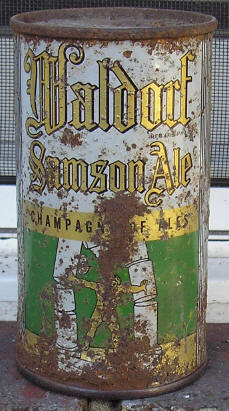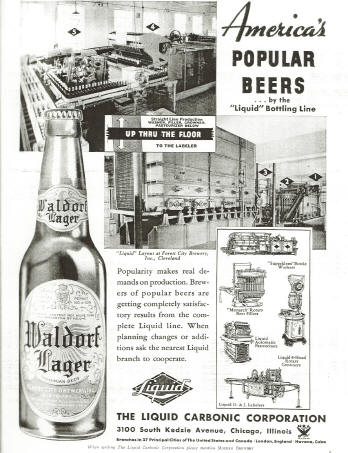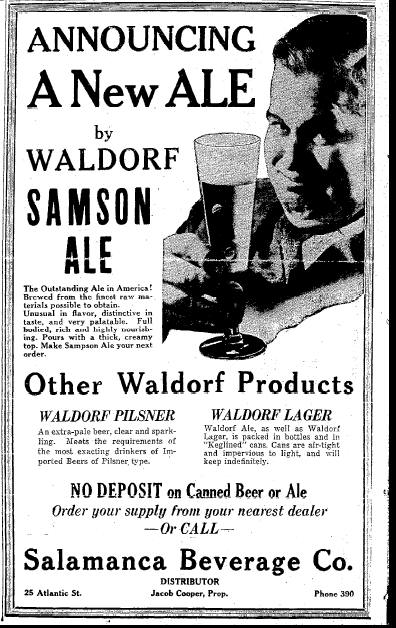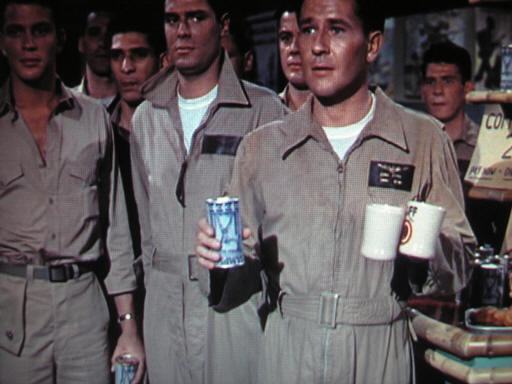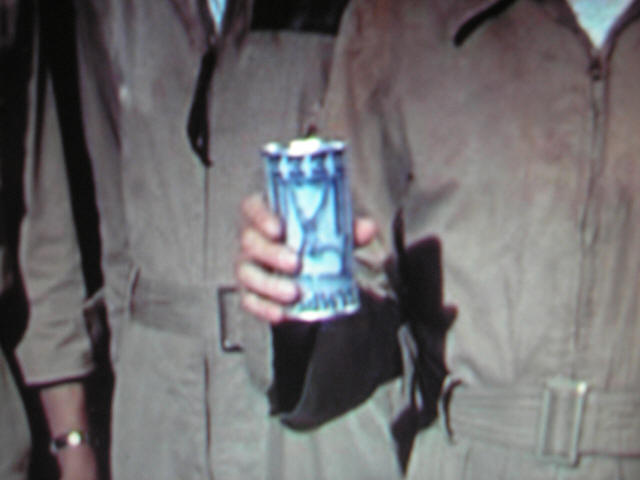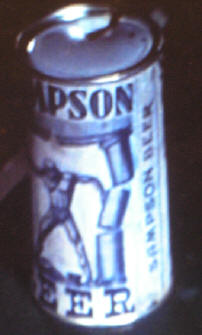Waldorf Samson Ale, circa 1938
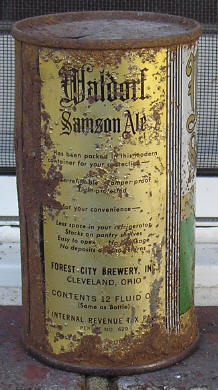 |
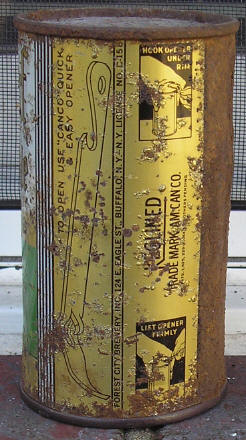 |
A good friend in the Rusty Bunch sent me this can after dumping it in 2004 in New York. It's been one of my favorite cans ever since. Note the full size picture of a churchkey on the side of the can. This is a "long opener" panel. Some of the early beer cans made certain that you knew what kind of opener you needed to get at the beer!
Forest City Brewing 1904-1944
The Forest City Brewing Company was founded in 1904 by local businessmen Michael Albl, Joseph Troyan, and Vaclav Humel. Of the three, only Humel had brewing experience having worked at Cleveland’s Pilsner Brewing Company. All three men were Bohemian and the brewery was establish in an area of Cleveland that was heavily Eastern European. The brewery originally had a capacity of 50,000 barrels a year and brewed largely for the local home market, which was somewhat unusual in a business then dominated by saloon “tied” to a specific brewery. Their main product was Select Pilsner Beer. In 1909 Brewmaster John Silhavy was replaced by Max Hansky, who stayed with the company through Prohibition.
MAN COOKED TO DEATH IN VAT
On December 14, 1911, Forest City’s assistant brewmaster, 25 year old Jerry Mrazek, was missing. Concerned workers began searching the plant. He had complained of nausea so some thought he had gone home sick. One searcher noticed that the cover over a huge steal tank used to heat water had been removed. The man climbed to the top of the tank and peered inside. At the bottom of the tank was a man-sized object. They pulled it up with ropes and found it was Mrazek, who had been cooked so completely that the flesh was almost falling off of his bones. One newspaper report claimed he committed suicide. Another report noted that he might also have fainted while ill and fallen in. The truth can’t be known, but it did provide a grisly detail to the history of this brewery.
Prohibition
Ohio started Prohibition in 1919, a year ahead of the US as a whole, but only after several referendums and years of political battles. It was never popular in Cleveland, the same as in most large cities. Forest City stayed in business by making X-L-N-T near beer and Zem-Zem grape juice although it did not have as many workers as before. In 1930 the brewery closed unable to find a productive use for the building. As the Forest City manager noted when Prohibition began, “Breweries have ceilings that are too high and windows too small to turn the plants into anything else except at prohibition cost."
A 1934 ad from a brewing industry trade journal showing the bottling plant in Forest City Brewing.
Post-Prohibition
In 1933 the brewery was purchased by several local businessmen who saw the opportunity once Repeal was successful. Jack Harris and Carl Lang also invested in the New Philadelphia Brewery (in Ohio) and a brewery in Cincinnati that they planned to also call Forest City. The Cincinnati plant ended up being the Burger Brewery. The new Forest City Brewery in Cleveland was incorporated in early 1933 and the plant underwent considerable renovation. By Summer they were selling beer again.
The brewery had gotten a jump on the other Cleveland breweries and to meet demand soon had to expand to 140,000 barrel capacity and then to 200,000. With brewmaster Max Hansky still working, they made Waldorf Beer and Ale, Samson Ale and Samson Brau Lager. The “Samson” brands had a higher alcoholic content, hence the “strength” image. Forest City also made Old Bohemian Style Pilsner and Lager beer. In 1935 they became one of the first breweries to utilize cans. Soon they were canning Waldorf Beer and Ale as well as Samson Ale. Before World War II they also canned Old Bohemian and Waldorf Red Band Pilsner Beer.
A 1938 ad from a small New York state newspaper. Samson Ale was not new then, but perhaps it had just been introduced to this market. Judging from where Forest City cans are found today, they sold in Northern Ohio and western and northern New York.
The flush days didn’t last, however, and as other Cleveland breweries began production Forest City lost its initial advantage. Jack Harris sold his part of the company in 1938 and Carl Lang became president. In 1938 Forest City declared bankruptcy. In 1940 a new group bought the brewery and it struggled to stay in business. In 1944 it was purchased by the Brewing Corporation of America, better known by its later name, Carling. The old Forest City brewery became the second BCA plant in Cleveland making Black Label Beer and Red Cap Ale. In 1948 the brewery was closed and the brewing equipment sold. The building hosted several other businesses over the years but most of the building survived and is now on the National Register of Historic Places.
Sampson in "Flying Leathernecks"
The 1951 John Wayne movie "Flying Leathernecks" features some fake "Sampson Beer" flat top cans in an early scene set in an on-base club for pilots. Below are some screen captures.
The pilots drink Sampson Beer. A close up of the (upside down) can <<<A closer view of the label.
Sources Used
Most of this article came from a great book, Brewing Beer in the Buckeye State, Vol 1, by Dr. Robert Musson. It come with an expanded version on CD. Entry 46: Forest City Brewing. Pp. 282-91.
“Boiled to Death in Vat of Water” Marion Weekly Star. Dec. 16, 1911.
“Man Cooked to Death in Vat” Elyria Evening Telegram. Dec. 14, 1911.
“Head of C&S Brewing Co. Sees No Future for Plants.” Sandusky Star-Journal. Dec 27, 1918.

